Have you ever wondered what it would be like to be an exorcist in modern Japan? Neither did I. But possibly, the question itself piqued me when I watched the trailers for Tango Gameworks’ Ghostwire: Tokyo. Seeing the protagonist purging Japanese mythological creatures using finger magic and hand gestures made me excited for the game. Thankfully, I was able to get my hands on a copy before its eventual release. So, is this game worth buying or should you just save your money? Read this review to know more!
This game has been played and reviewed on a PC.

Ghostwire: Tokyo begins with Akito getting possessed by a mysterious spirit called KK. After waking up from a disastrous car crash, Akito wakes up to a mysterious fog creeping into downtown Tokyo, spiriting away anyone that comes into contact with it. Aside from the fog, monsters start appearing, terrorizing those left alive. It is then up to Akito and the voice inside his head, KK, to figure out what is happening and how they can save Tokyo’s missing denizens.

I won’t reveal to much about the game’s lore as it is one of it’s stronger points. The takeaway here is that you are the lone survivor of an event that leaves Tokyo’s population count to 1. Together with KK, you as Akito must solve the mystery of the event and find out the culprit behind it. The adventure takes you to famous sites and streets of Tokyo and nightmarish hellscapes.
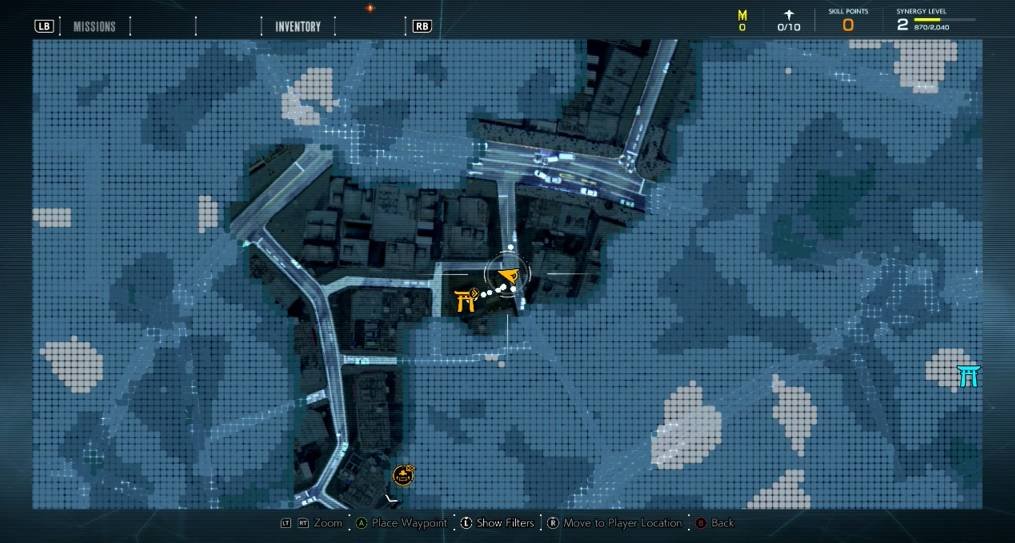
If I were to be asked about summarizing Ghostwire: Tokyo, I can simply say: it’s like Far Cry, but instead of guns and armed men, you get mystical powers and ghosts. The gameplay loop here is that you explore districts of central Tokyo, unlock a temple to ward off the fog, then collect items to grow stronger. Rinse and repeat. The difference is that instead of being set in the middle of the wilderness, your playground here is central Tokyo. You have to scale buildings, parks, and skyscrapers to get around in this game.
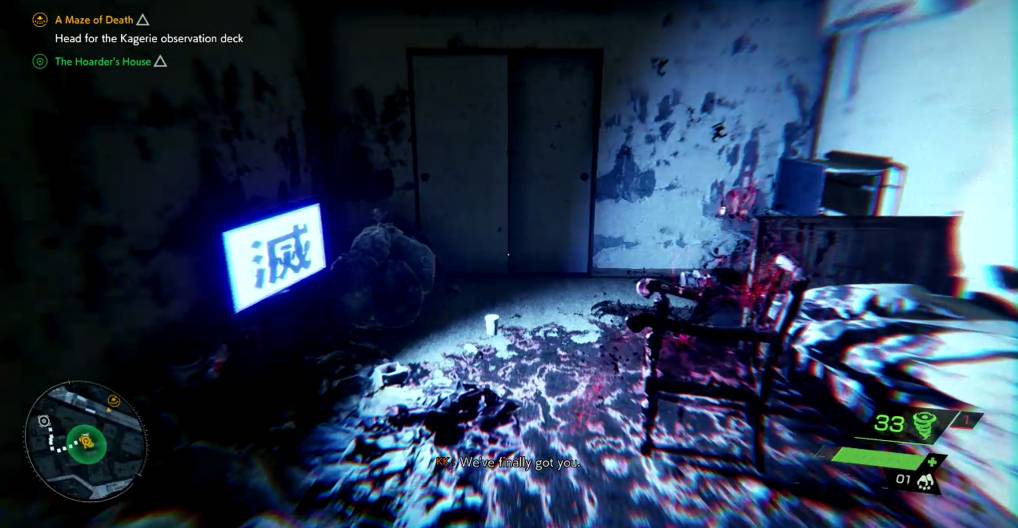
Alongside the gray urban landscape, you also get to explore surreal dimensions. This is where Tango Gameworks, also makers of “The Evil Within”, showcase their craft. Some locations have nightmarish effects reminiscent of films showcased during the boom of Japanese horror in the early 2000’s. These impressive horror environments are mostly found in side quests.

Most of the missions in Ghostwire: Tokyo involve elements from Japanese myth, folklore, and ubran legends. Some of which appear in the main campaign. However, a good chunk of them appear as the game’s side quests. Side quests are optional missions that you can undertake to gain more experience and powerful items. Some of these are weird ones like the ghost that refuses to move on unless you give him rolls of toilet paper. Other ones are downright scary like the first time you encounter a Kuchisake Onna.
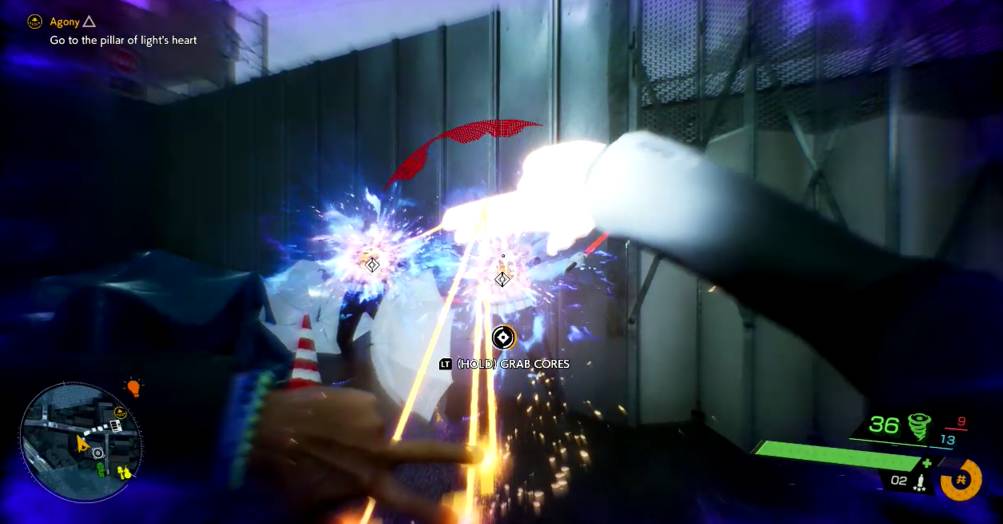
So what’s with the name of the game? The name comes from an ability that you can use when an enemy is stunned and low on health. Think of it as the game’s version of a takedown. You can use the wire to take out “cores” from enemy spirits. Doing so rewards you with more charges for your spells and health recovery.

As an open world game, Ghostwire: Tokyo allows you to traverse the whole map by doing either of the two things: progress the story or cleanse Torii gates. Once you cleanse a gate, you can safely access the surrounding area as the cleansing dissipates the deadly fog. You can use the gates to fast travel and also to know various collectibles found in that district.
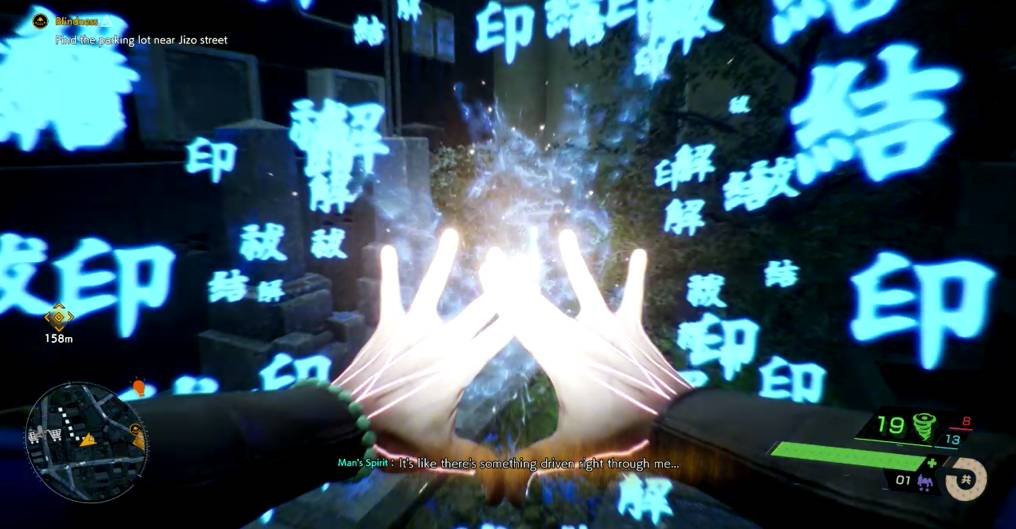
Ghostwire: Tokyo has character progression in which you collect souls to power up Akito and KK’s abilities. Souls can be found around Tokyo and can be “saved” and “delivered” to get money and experience points. Once you have enough experience, you can then select which skill you want to unlock or improve. This system helps in keeping the gameplay loop rolling as you constantly have to explore and grind experience points to unlock more skills.
As you wander around Tokyo, you get to encounter a number of ghosts, demons, and spirits from Japanese folklore. A large number of them act as the game’s enemies. To combat them, you have a number of spells and tools at your disposal.
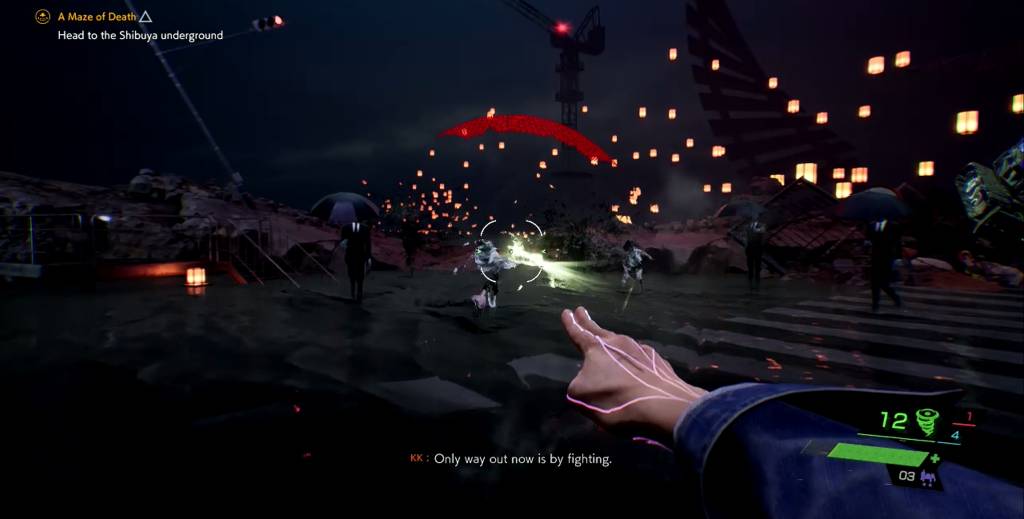
Instead of guns and blades, you get to use magic and spells. You play with 3 spells: wind, water, and fire. Wind, the green one, is like your SMG. It has a good fire rate and can be charged to dole out multiple attacks. Water is like your shotgun. Casting a water spell attacks all enemies with a large horizontal arc, perfect for close combat or for destroying enemy projectiles. Fire is the game’s version of an RPG and grenade. It has high damage, can pierce through most enemies, and can be lobbed to damage multiple enemies.
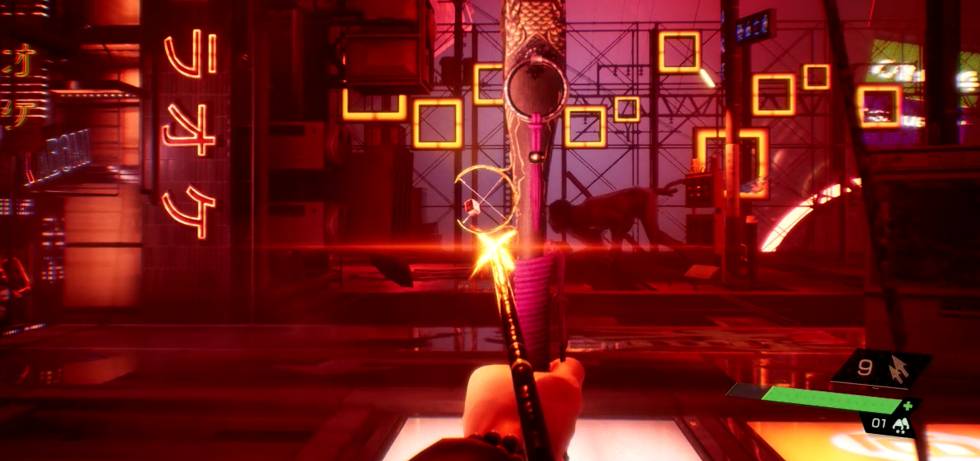
Aside from the spells, you also get to use a number of talismans and a bow in Ghostwire: Tokyo. The Bow can be used for stealth and at set moments, is the only weapon you can use during fights. Talismans are like your mines. They can be placed on the ground to either stun incoming enemies, spawn a bush you can hide in, etc. Quick-thinking and good application of tools are necessary in overcoming the challenges in Ghostwire: Tokyo.
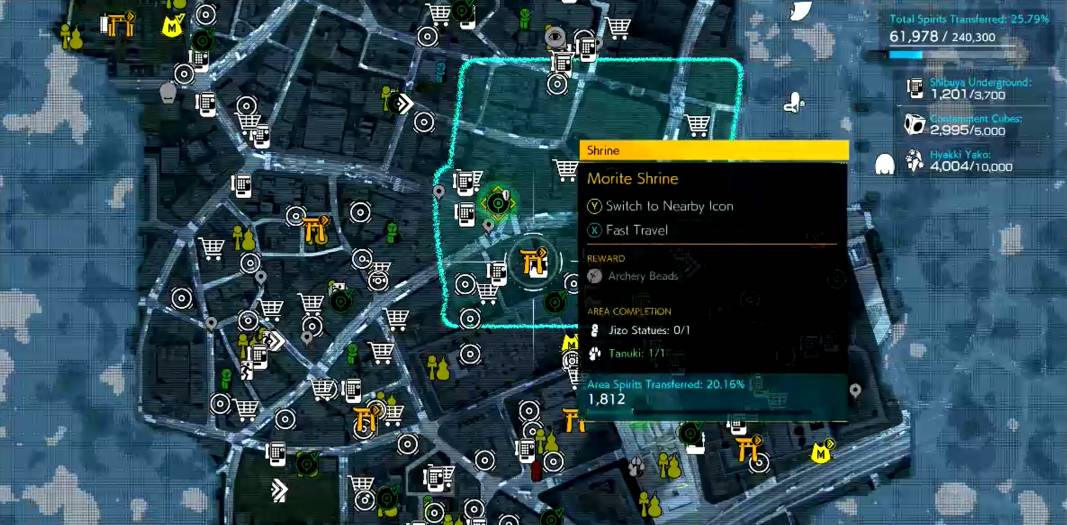
As an open-world, Ghostwire: Tokyo, at some point in the game, leaves the city open for exploration. And with that, you also get free rein to collect. Scattered around the city are collectibles that you can turn in for money and items. The more collectibles that you turn in, the rarer the items that you get. If you are gunning for more achievements for this game, this is where you’ll likely splurge in a lot of time.

Aside from leveling up and arming Akito, you also come across various outfits that you can mix and match for Akito. These outfits appear in cutscenes and in the game’s photo mode. Outfits can be had by completing missions and side quests.
The game is neither super impressive nor disappointing in terms of visual presentation. Utilizing the Unreal Engine 4, Tango Gameworks managed to recreate a digital version of Tokyo just with less people and more glowing entitites. Design-wise, the atmosphere for a spooky version of a large metropolis is here. The demons and the spirits that you encounter are horrific and are more or less inline with the myths and urban legends that they were based on.
| CPU | AMD Ryzen 5 3600 @ 4.00Ghz |
| GPU | AMD Radeon RX 5700 XT |
| Motherboard | MSI B450 TOMAHAWK MAX |
| RAM | 16GB Patriot DDR4 3000Mhz |
| HDD / SSD | Crucial 1TB M.2 NVMe SSD |

Sound and music play an important part in setting the atmosphere in Ghostwire: Tokyo. The sound of the rain pouring while weeping ghosts wander about can send chills to one’s spine. The arrival of the parade of demons is heralded by its ominous tunes. The fury of the 1 on 1 fights against bosses are transmitted with the background music. Suffice to say, there’s nothing to complain here.

Exploring, cleansing, and exorcising demons is derived from a tried and tested gameplay loop that is proven to be engaging. Ghostwire: Tokyo executes it well and it has managed to draw me in. Worth noting are the tools that are available at the player’s disposal. They leave various approaches possible, allowing players to customize the way they play, albeit, to a limited extent.
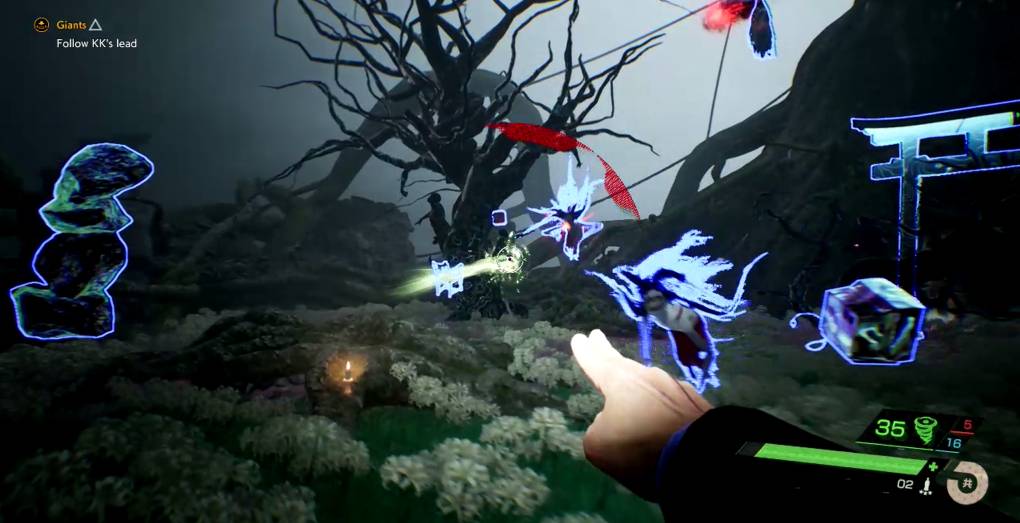
The gameplay loop, while engaging at first, can be downright repetitive once you reach the end of the skill tree. Story missions and sidequests are just enemy encounters with extra steps. You talk to ghosts or spirits and afterwards, you then get into an encounter against waves upon waves of enemy monsters. The dialogue and location might be different for each one, but the outcome is always the same: fight enemies and survive.
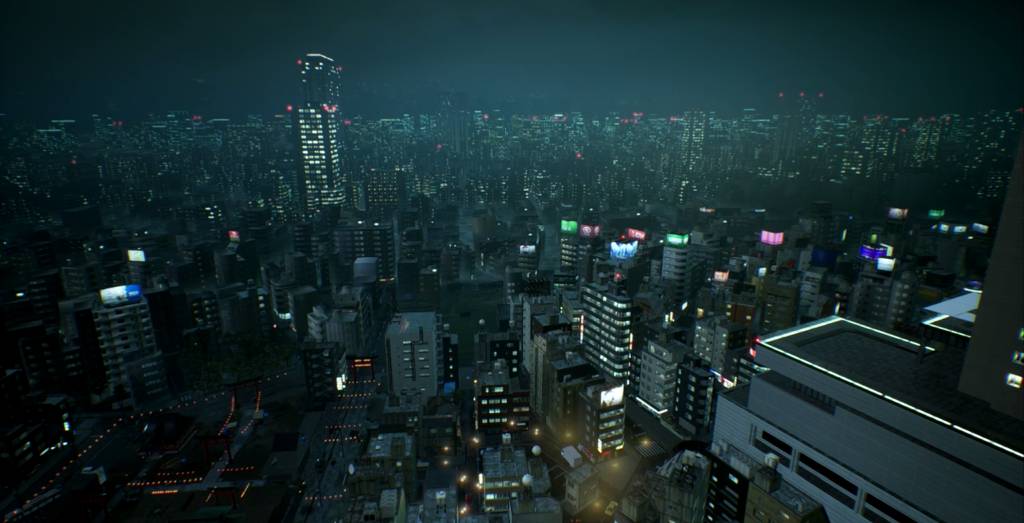
The recreation of Tokyo here is outstanding. I can draw parallels similar to that of Sega’s Yakuza’s open world, but in Ghostwire: Tokyo, you also get to explore everything vertically. Once you unlock the necessary abilities, you can easily scale tall buildings and view the lay of the land. The neon lights, the dark alleyways, and the glowing advertisements are surprisingly close to the real deal. In terms of immersion and atmosphere, the environment itself is a huge factor and Tango Gamework’s nailed it in this department.
Content-wise the game is definitely more than 25+ hours if you include the side quests. However, making a beeline and just accomplishing the main campaign itself can significantly reduce the game’s play time. Side quests in the game provide souls that help you get more experience and power, helping you get into the loop but they are optional. Although hard, it is not impossible to finish the main campaign without troubling yourself with the side quests. Neglecting the side missions significantly reduces the game’s running time to several hours.

A good point that I appreciate with this game is that while the elements are limited, they are well-designed. Creatures that you encounter here are horrific and can be sometimes terrifying to fight against. There are times where-in the scares are effective due to the synergy between the sound, the monsters, and the atmosphere. If you are expecting Ghostwire: Tokyo to be just a normal action-adventure game, you’ll be surprised as this is also a horror and suspense game. Unfortunately, most of these spectacular encounters are buried in optional missions that players can miss.

Yes. If you are a fan of open world games where-in you have to explore and unlock more stuff, then get Ghostwire: Tokyo. The feel is a bit different from other open world games as the setting is in Tokyo, Japan and the vertical design of the world map leaves a lot of room for exploration.
The gameplay loop is also effective enough to draw one in. I lost track of time during the early to mid phases of the game. Which is a good sign for me. Gameplay involves resource management, even until the very end of the game, and a lot of exploration and combat. If you fancy that kind of play, Ghostwire: Tokyo has it in spades.
Although the main campaign is short, the slack is picked up by the large number of side quests and unique collectibles. Ghostwire: Tokyo also acts as a crash course to Japanese mythology and urban legends, something which may be appealing to some.
All in all, if you want to play a game that is open world, with horror elements, and is set in Japan, get Ghostwire: Tokyo. Likewise, get it if you want to see a digital version of Tokyo, just with less people and more angry spirits.
Ghostwire: Tokyo is available on Steam for PhP 1,799.99 for the standard package and PhP 2,399.99 for the deluxe edition. You can also buy the Sony PS5 physical version from your favorite local game stores with the standard edition having an SRP of PhP 2,990.
